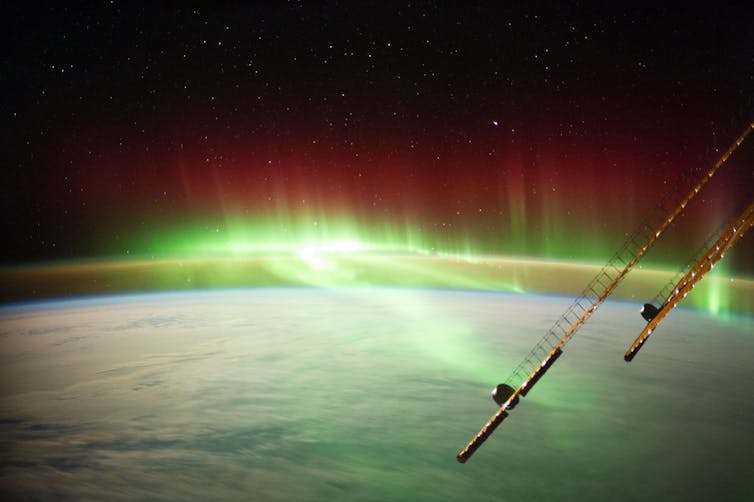By Sujatha Raman, Australian National University and Brian Schmidt, Australian National University
Signed exactly 76 years ago today, the Universal Declaration of Human Rights is the world’s most translated document. It is widely acknowledged as the foundation of international human rights work, not just in legal settings but in wider civil society.
But few know that among the many social and political freedoms defined by the declaration is a human right to science. Article 27 of the declaration positions this right in the cultural sphere, stating:
Everyone has the right freely to participate in the cultural life of the community, to enjoy the arts and to share in scientific advancement and its benefits.
This right might seem meaningless at a time when governments around the world have slashed funding for science and appear to be ignoring scientific evidence for how to address global problems such as climate change.
But there’s much more to the right to science than what you might immediately think of. It can also serve as a spark for human imagination and curiosity. And this is where its true power resides.
The evolution of the right to science
Interpretations of the right to science have evolved a lot over the past decade.
It was initially interpreted mainly as the right of scientists to do their research and the public’s right to access and benefit from this research. But this led to no small share of conundrums. For example, what if the right to do research is at odds with the human rights of affected communities?
This conflict arises in virtually all fields, from anthropology and archaeology to computer science and the life sciences. For example, building a laboratory or collecting data for research can potentially put a community at risk of losing their heritage, identity or livelihood. Some scholars therefore argue that the right should also include a duty to anticipate and take steps to ameliorate such tensions.
The United States National Academies have also begun to recognise that access and benefit doesn’t automatically follow from biomedical research. In fact, research may increase inequities if it’s not conducted in line with the principles of fairness, justice, equity and the common good.
Equally, what are we forgetting if we treat the public only as a beneficiary of science done by credentialed researchers?
The right to science is also about the right to participate in science and in decisions about research.
For example, it means Indigenous peoples have the right to be recognised as knowledge producers – a sentiment captured in Australia by researchers acknowledging that First Nations peoples are also the First Astronomers.
The International Science Council’s recently released framework nicely captures these nuances. It states that the right allows people to participate in and enjoy the benefits of science.
The right to science as a force for curiosity
Most of these discussions see the right to science as a way to protect fundamental freedoms – conjoined with responsibilities – of both scientists and the public. But a different meaning emerges when we remember the right to science is also a cultural right.
In a keynote address to an international conference in Switzerland in 2015, Farida Shaheed, the former United Nations Special Rapporteur for Cultural Rights, explained how the right to science and the right to culture are inextricably linked. Both entail, she said, the conditions for:
people to reconsider, create and contribute to cultural meanings, expressions, or manifestations and ways of life.
This highlights how the right to science can serve as a force to galvanise the more positive role of curiosity and the imagination. As such, it can be a spark for a new ethos of curiosity-driven research for the planet.
Curiosity in a time of crisis
The role of science in policy making and practice is at a crossroads.
Governments routinely invoke geopolitical competitiveness and commercial success as reasons for supporting research – particularly on so-called “critical technologies” such as quantum computing.
Yet the planet faces interconnected crises of climate change, pollution, biodiversity loss and deepening inequalities. The response to this must therefore include all of humanity while creating space for researchers to be curious about different possible futures and pathways for designing them.
The International Science Council’s initiative on Science Missions for Sustainability is predicated on the understanding that we won’t achieve the ambitions of the United Nations 2030 agenda with siloed thinking or new technologies alone. The council calls for all disciplines to work together to produce actionable knowledge oriented towards practical solutions for our planetary challenges.
Humans thrive on curiosity even in times of crisis. We have many examples from the 20th century of curiosity-driven research yielding a “giant pool of ideas” from which came many of the technologies we take for granted today. The challenge now is to harness and support this curiosity in ways appropriate to the scale and scope of the challenges we currently face.
We know from history that worlds are created and changed not just through new technologies and market-based solutions, but also through culture and social innovation.
The right to science provides a welcome stimulus for thinking more deeply, creatively and curiously about these interrelationships in developing policies for research.
This article is republished from The Conversation under a Creative Commons license. Read the original article.





